Term archive
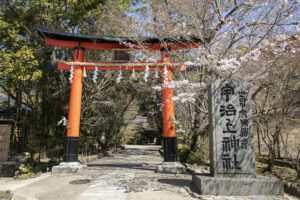
投稿タイプ:sightseeing
Ujigami Shrine
The main hall, said to be the oldest extant example of Shinto architecture, was built during the Heian period (794-1185), and consists of three units connected in the nagare-zukuri style, with larger shrine units on the left and right, and a smaller center one. The prayer hall (a national treasure), is built in a shinden-zukuri-like residential architectural style, and is said to be the remains of the old Uji Imperial Villa. Together with Uji Shrine, this his shrine is said to have originally been Shinto shrines on the grounds of Byodo-in Temple.
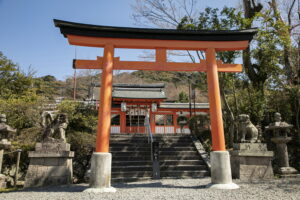
投稿タイプ:sightseeing
Uji Shrine
Standing on the banks of the Uji River, Uji Shrine is said to have been built in the Heian Period (794-1185). Formerly, it was known as the Yawata-miya Imperial Villa (Kirihana Higeta-no-miya), and its enshrined deity is Uji-no-Waki-iratsuko, son of Emperor Ojin. The main hall (an Important Cultural Property) was built in the Kamakura period (1185-1333) in a three-peaked nagare-zukuri style, but there are other remaining cultural treasures as well, such as wooden guardian dogs and Noh masks.
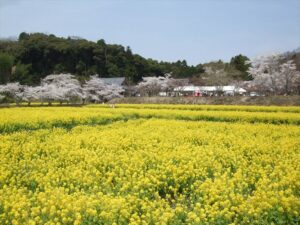
投稿タイプ:sightseeing
Omido Kannon-ji Temple
Omido Kannon-ji Temple is located in the “Infused with Tea” region of Kyoto in Kyotanabe City. The temple was founded over 1300 years ago at the request of Emperor Tenmu. It has been hit by numerous fires and in a fire in 1437 (Eikyo 9) 13 temples and 20 monk's houses were lost. Only Omidou (main hall) was rebuilt and survives to this day.
The main statue is the eleven-faced Avalokiteśvara Bodhisattva, which is made by a technique which paper or cloth is lacquered to make it look like wood, and is registered as a national treasure as one of the only seven eleven-faced Avalokiteśvara Bodhisattva statues in the country.
In spring, the cherry blossoms on the approach to the temple are in full bloom. Also rape blossoms cover the field in front of the temple, which is a spectacular sight to see.
In autumn, the main hall and garden are decorated with fall leaves. A light-up event is held every year and is the best way to enjoy the fall colors at the temple.
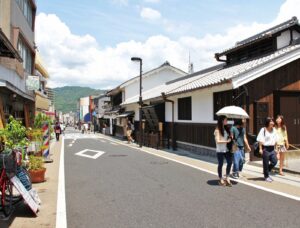
投稿タイプ:sightseeing
Scenery in Central Uji
Along Uji-bashi Street, the homes of tea masters have stood since the Sengoku (Warring States) period (1467-1590), and to this day many tea wholesalers, tea farmers, and others contribute to the charming scenery here.
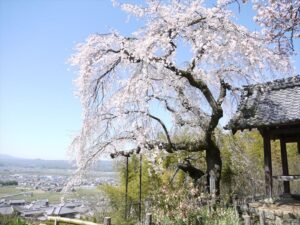
投稿タイプ:sightseeing
Jizozen-in Temple
Standing on a hill and to the south of Tamatsuoka Shrine, Jizozen-in Temple offers a sweeping view over the plains of the town of Ide. The glorious clouds of weeping cherry blossoms that bloom here are designated a natural monument by Kyoto Prefecture, and they are also relations of the weeping cherry trees in Maruyama Park, Kyoto City. The cherry trees are reputed to be some 280 years old.
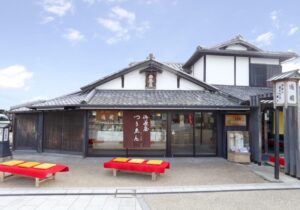
投稿タイプ:sightseeing
Tsuen Chaya Tea house
This long-standing shop was built in 1160, and it is said to have been visited by such historical figures as warlord Toyotomi Hideyoshi, samurai Miyamoto Musashi and his lover Otsu. Visitors can enjoy matcha or sencha dango tea sets and more at the attached café.
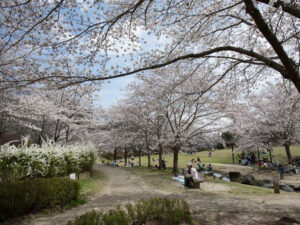
投稿タイプ:sightseeing
Keihanna Commemorative Park
Keihanna Commemorative Park is 24.1 hectares in size, and commemorates the establishment of Keihanna Science City (Kansai Culture and Science Research City) in 1995. The park includes both freely accessible and paid areas. The free areas include the 'Hiroba' a wide open plaza, which has cascading grounds shaped like rice-paddy terraces with large lawns for playing freely, and a childrens' playground. Also free of charge is the 'Tani-ai' valley, made to look like a typical Japanese landscape with a small stream, bamboo grove, and plum garden. The paid area includes the Suikei-en, a Japanese-style garden with a path that brings you around scenery including a magnificent rock cluster, cascading water ponds, colourful seasonal flora and an area to feed carp, making it enjoyable for children and adults alike. Visitors can also enjoy a panoramic view of the garden from Kangetsukyo Bridge, which is 123m long and 4m wide, and 10m above the water. Particularly spectacular is the view of autumn foliage from the Japanese maple tree valley. There, amongst the moss, approximately 80 trees line a small, delicate stream. Inside Suikei-en Garden you can also find Mebuki Forest and Nagatani Pond, which are likewise styled like traditional Japanese landscapes, perfect for a stroll to enjoy nature in all four seasons. Additionally, the park hosts a range of events, from firefly-viewing to star-gazing.
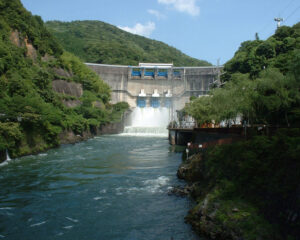
投稿タイプ:sightseeing
Amagase Dam
This multipurpose dam was completed in 1964 with the aims of flood control, electricity production, and water supply preservation. With a height of 73m and a length of 254m, the imposing Amagase Damn is an arch dam built in a dome shape. From the top of the dam, you can look out over the lake at its top, nicknamed the "Phoenix Lake," on whose surface the different colors of the seasons are reflected.
The Phoenix Lake is so named because it resembled the shape of the birds spreading their wings to fly further downstream, and also with the hope that people will be able to create a kind of paradise (with which phoenixes are associated) on earth.
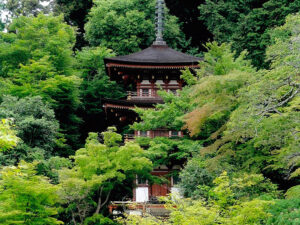
投稿タイプ:sightseeing
Joruri-ji Temple
Joruri-ji Temple, located in the "Kyoto Infused with Tea" region, is a temple of the Shingon Ritsu Buddhism (Nara sect) that holds 4 national treasures and 9 important cultural properties.
According to the records of the temple, the temple was opened in 1047 by Yoshiaki Shonin and enshrines the “Yakushinyourai,” the Buddha who can cure all illness. The name of the temple is said to come from "Joruri," the realm where the Buddha lives.
The main hall of Joruri-ji is particularly long with nine Amida Buddhas enshrined inside. During the Heian period about 30 such nine-body Amida temples were built around Kyoto, but Joruri-ji is the only temple that still exists. Both the main hall and nine-body Amida Buddha are designated as national treasures.
*The Nine Amida Buddhas sitting statues are being repaired two at a time over a five-year period from July 2018.
To the east of the main hall is a garden containing a three-storied pagoda and Yakushinyourai Buddha statue arranged around a pond. The layout of the grounds is said to be in the shape of the Sandskrit letter "A," expressing paradise.
Surrounded by abundant nature, the temple has also has been designated as a special national scenic spot. You can enjoy beautiful scenery throughout the year, and the road connecting Gansen-ji and Joruri-ji is called the "Stone Buddha Road," and there are many stone Buddha statues make it the perfect place for hiking.
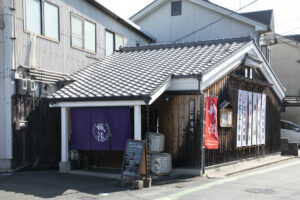
投稿タイプ:sightseeing
Joyo Shuzo
Founded in 1895, Joyo Shuzo produces sake and plum wine.
The brewery's representative brand is its Junmai Daiginjo Joyo sake, and plum wine. Its representative plum wines, "Hanakoeda" and "Umekoeda," use only local aodani plums, and are aged for over three years and prepared without added coloring or flavoring.
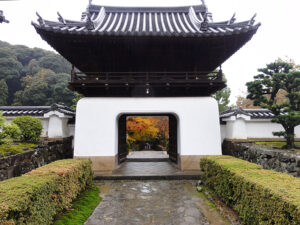
投稿タイプ:sightseeing
Kosho-ji Temple
This temple of the Soto Zen school of Buddhism was a training hall opened in Fukakusa (Fushimi) by the Buddhist monk Dogen in the Kamakura Period (1192-1333). It was later reconstructed in 1648 by Lord Nagai Naomasa of Yodo Castle, using the remains of Fushimi Castle. Highlights amongst the seven structures in the temple grouds include the Kotozaka, the approach to the temple that forms a tunnel of fall foliage in autumn; the temple gate made in the Ryugu-zukuri architectural style; “nightingale” hallway floors that squeak to alert those within of intruders; the Tenarai Kannon bodhisattva as mentioned in the classic "The Tale of Genji"; and chitenjo ceilings.
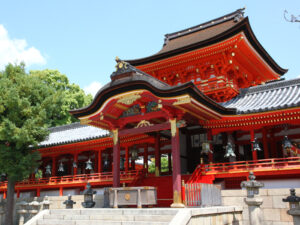
投稿タイプ:sightseeing
Iwashimizu Hachimangu Shrine
One of the three main shrines bearing the name Hachimangu, Iwashimizu Hachimangu Shrine was dedicated to a god for the protection of the nation in 860. After the main shrine was restored by Oda Nobunaga and its cloister rebuilt by Toyotomi Hideyoshi, Tokugawa Iemitsu built an additional ten shrine buildings in 1634, all of which are a part of this National Treasure.